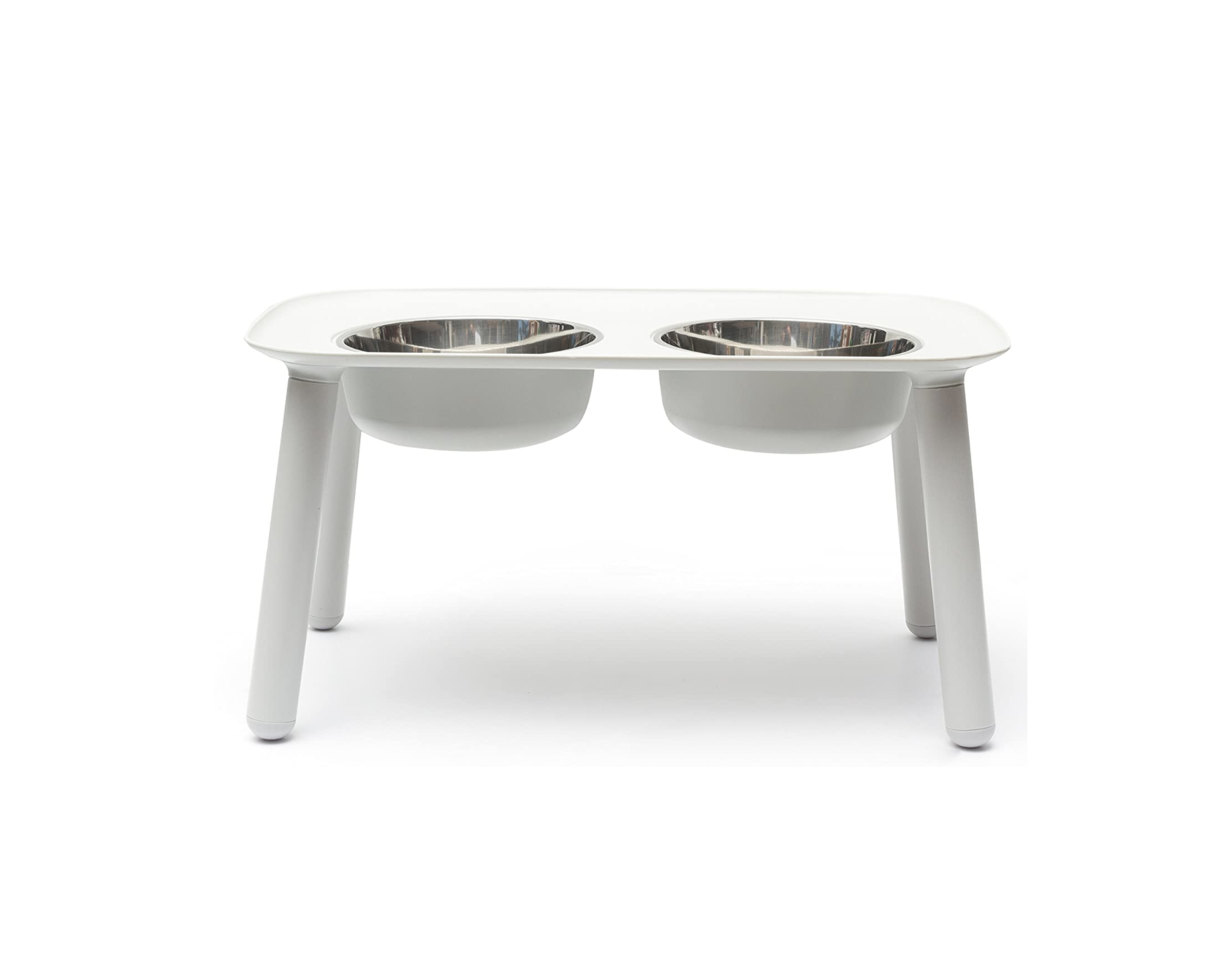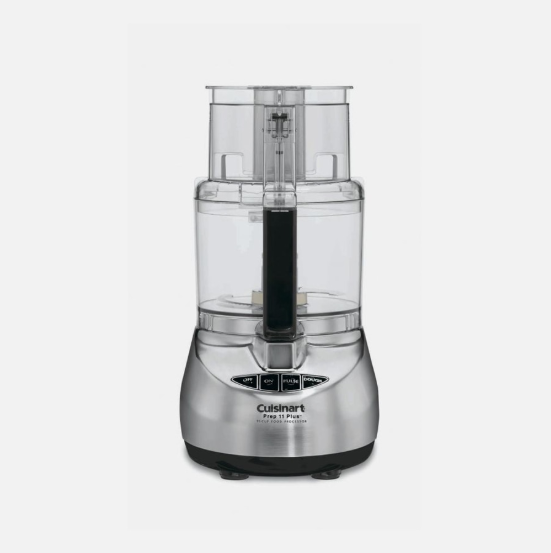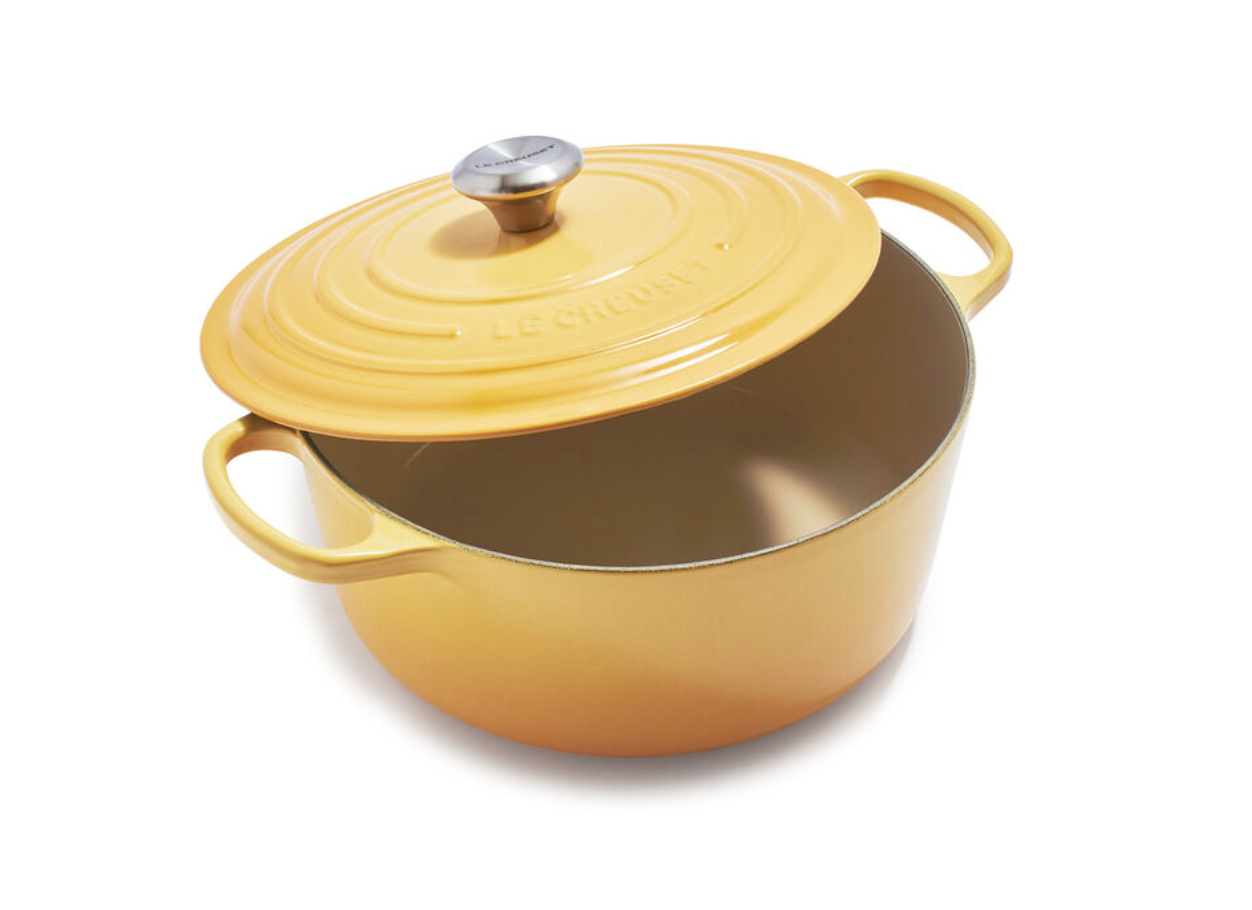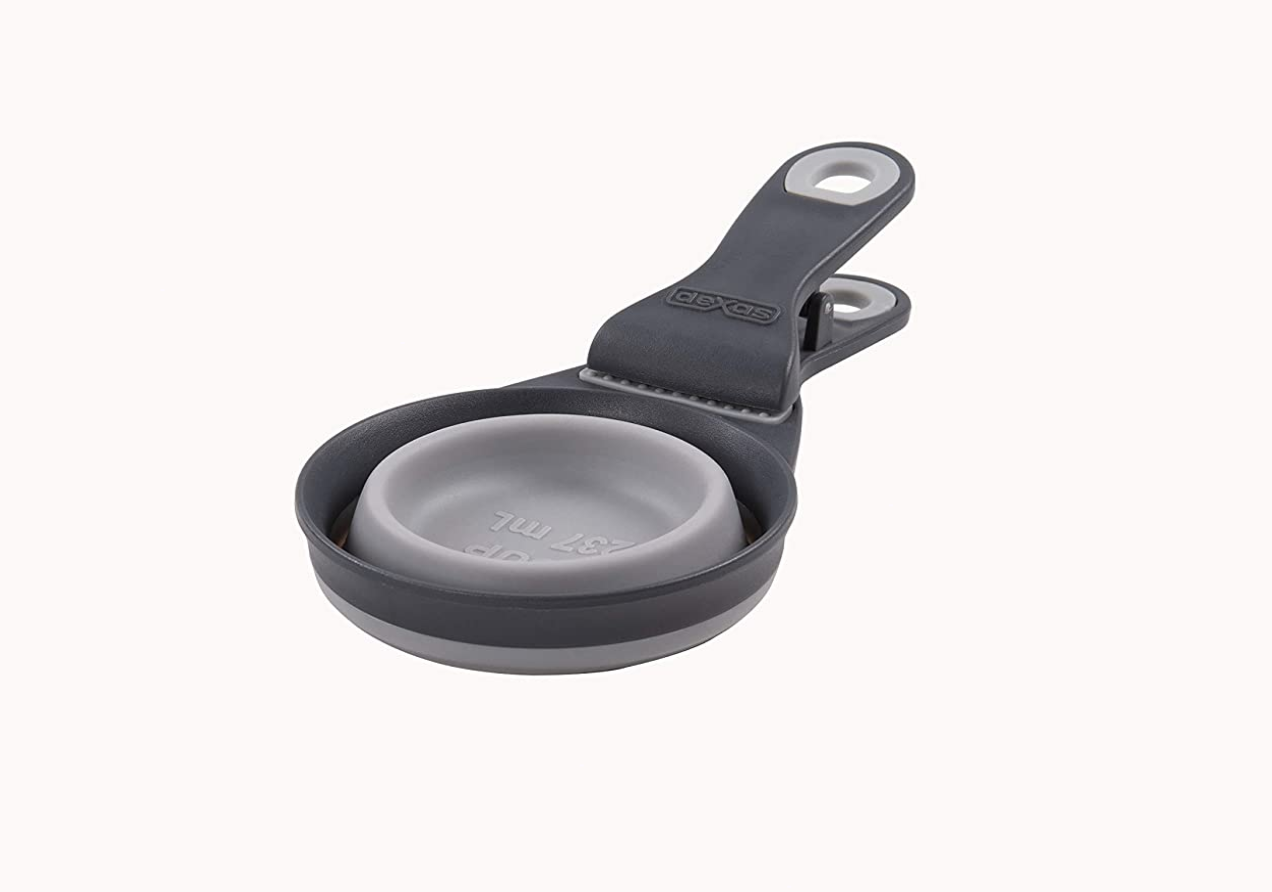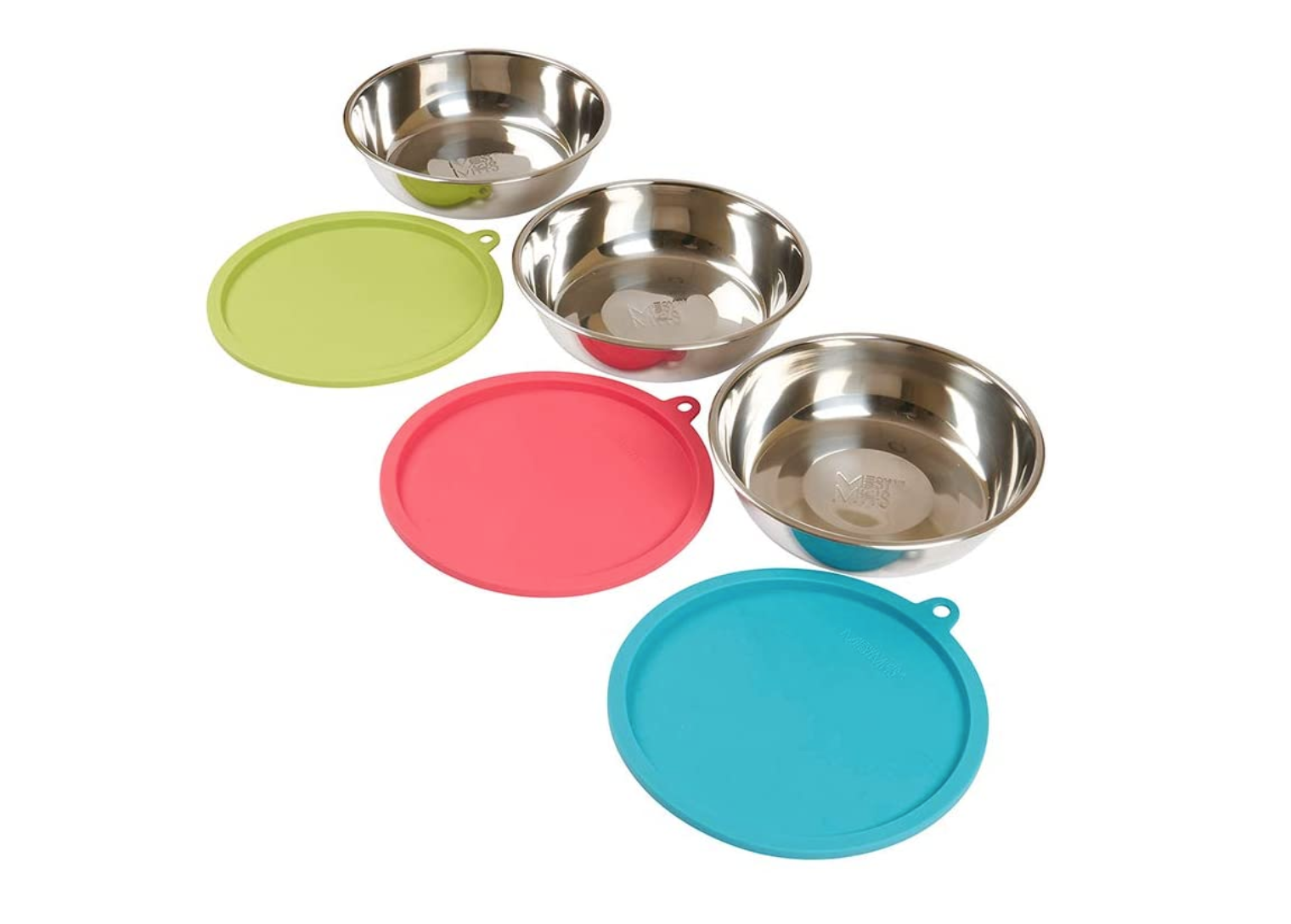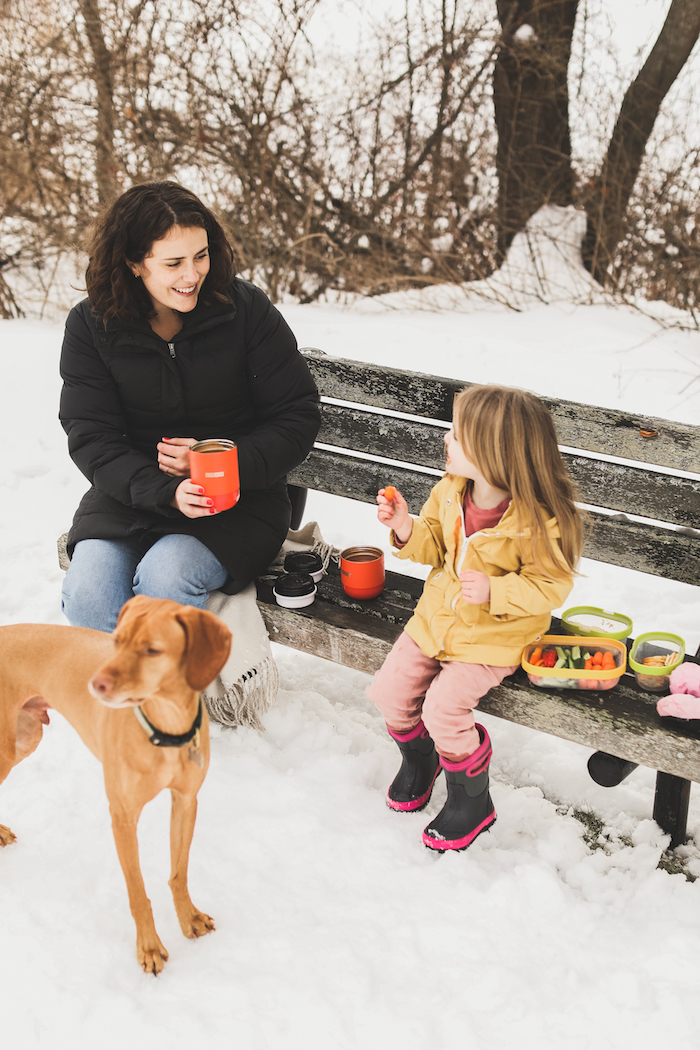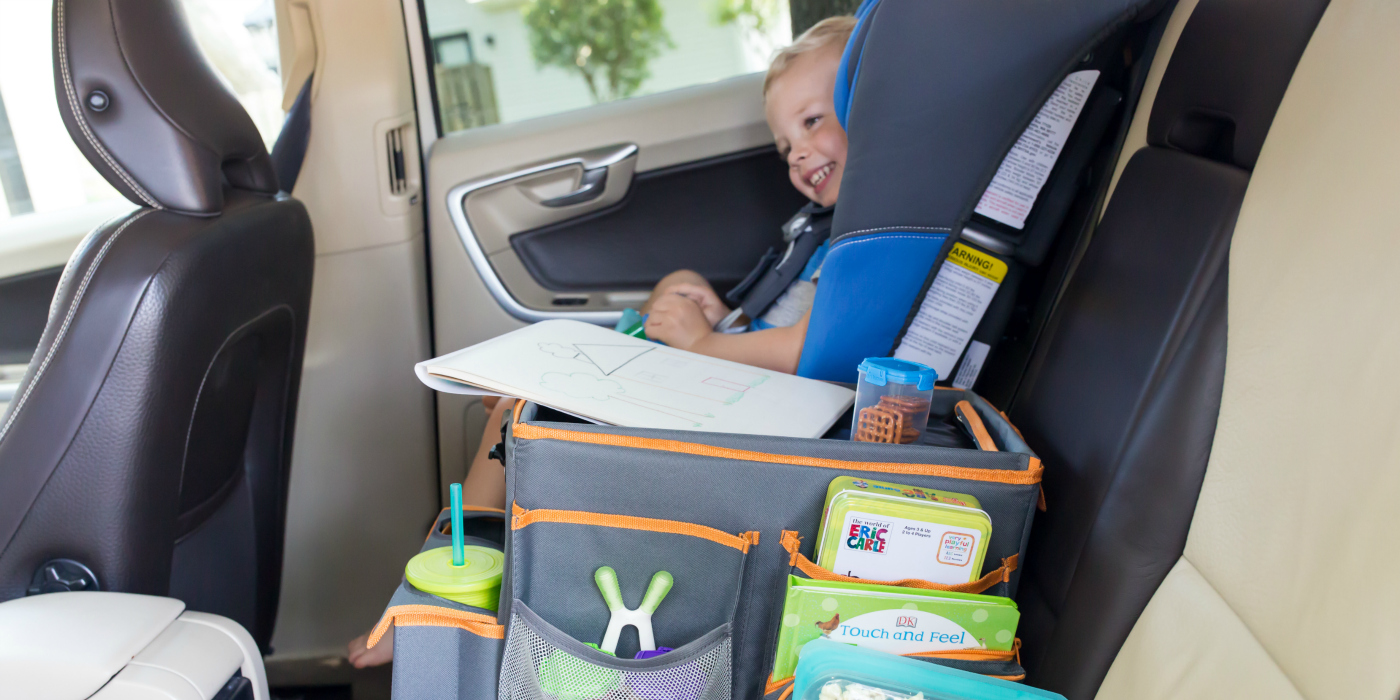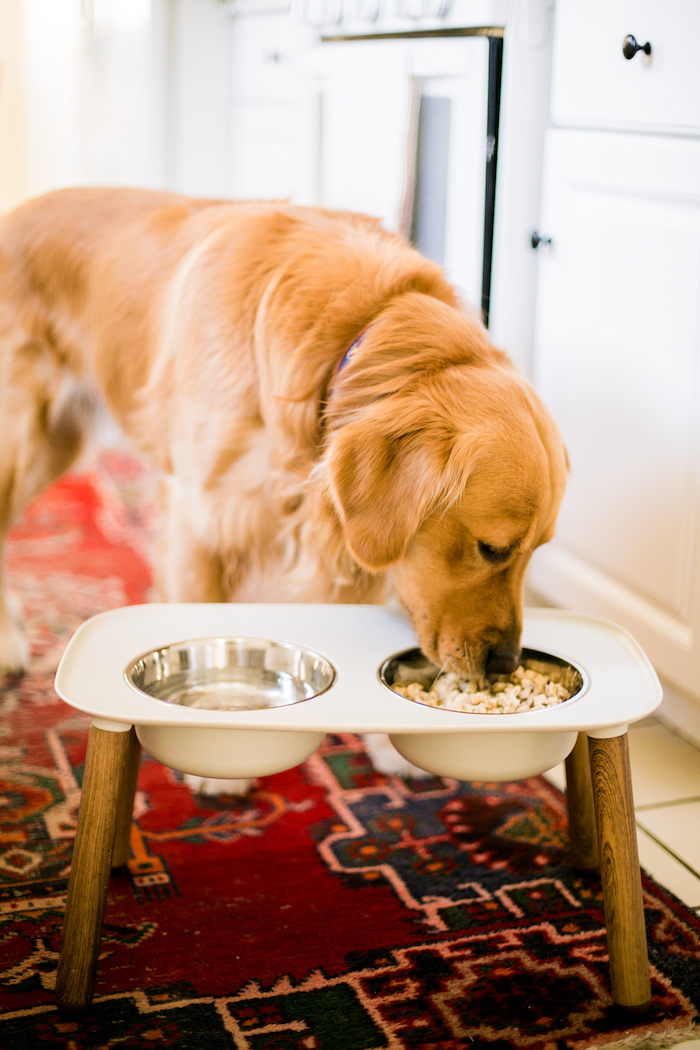
Homemade dog food is filled with rich protein, vegetables, and healthy grains. A homemade diet can make a tremendous difference in a dog’s health and life. Rascal’s homemade dog food recipe is filled with ground turkey, sweet potatoes, carrots, and zucchini squash and macaroni noodles.
Our golden retriever Rascal eats a 100% human-grade dog food diet. Jared and I always joke that we could eat Rascals food with enough sriracha. Let me preface but saying that I NEVER thought I would be the type of person that made their dog’s food homemade.
Common Food Allergies for Dogs
After Rascal turned a year old or so, he started developing really strange eating habits. He wasn’t finishing his food, had loud intense stomachaches and frequently threw up. We went through a number of blood tests. He had been diagnosed with things like pancreatitis, anxiety and one vet even thought he had parvo. We were stressed and at a loss at how to more forward. That is until we did an allergy test.
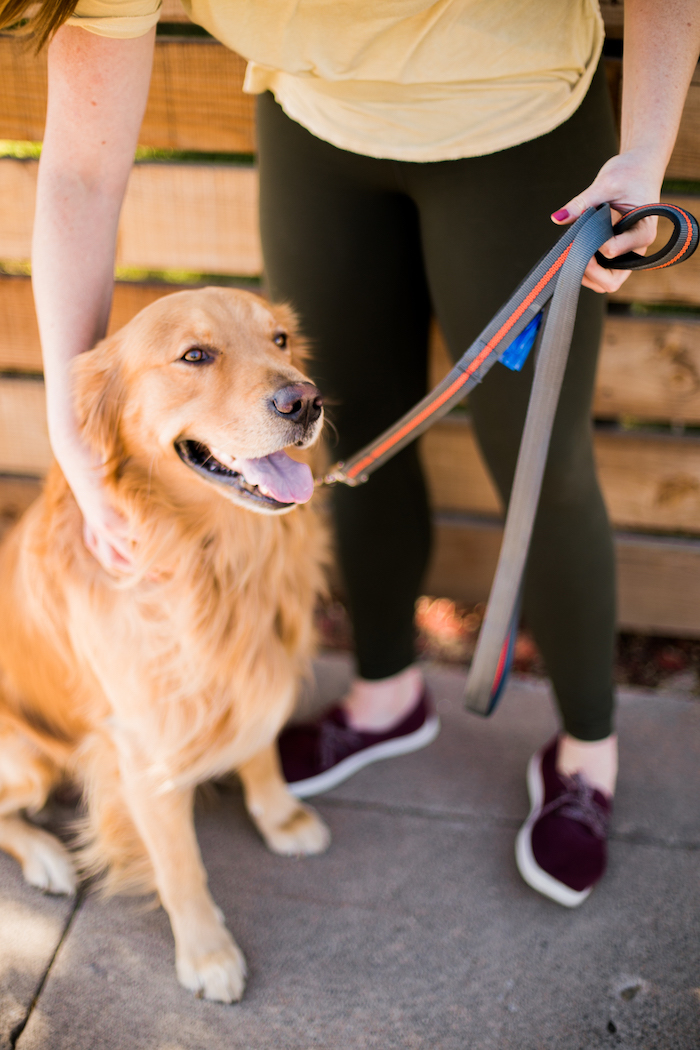
We uncovered that Rascal was allergic to a dozen different food items, one being beef, the main ingredient in his traditional dry dog food. We were introduced to an all-natural human-grade dog food company called ‘Just Food for Dogs’. The company sells premade food and teaches people how to make recipes at home. Once we started this all-natural diet the stomach aches subsided and he was the happiest we had ever seen him.
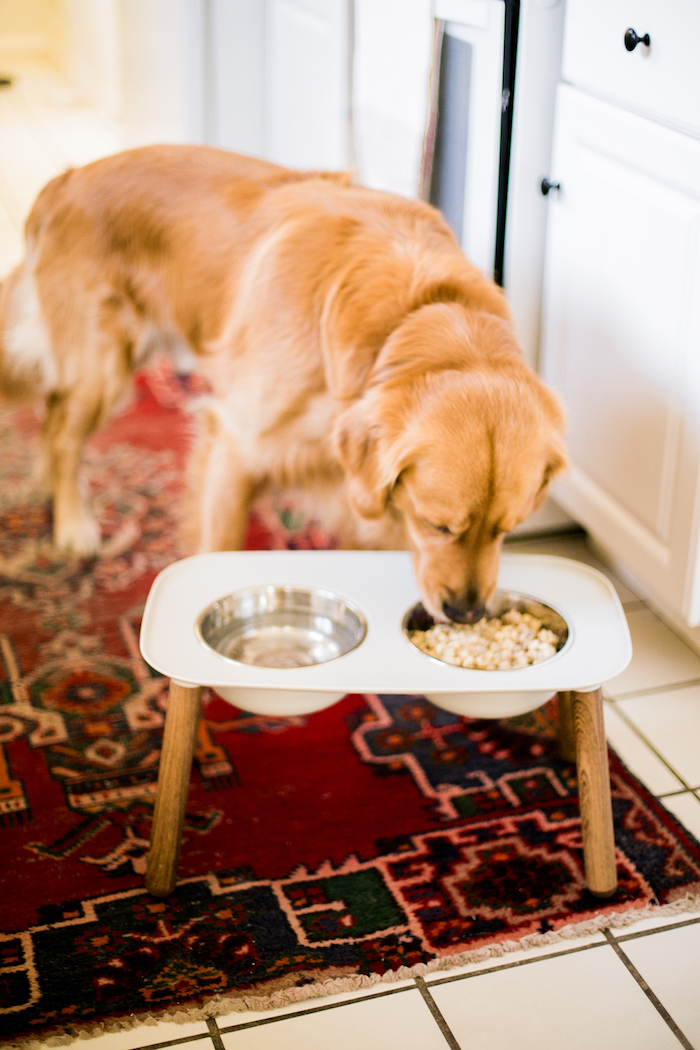
At first, the thought of homemade dog food was so daunting and just downright ‘boujee’. I can honestly say that making his food doesn’t cost much more than the prescription diet he was on beforehand. After watching the documentary ‘Pet Fooled’ we realized just how unregulated the dog food industry was and started to feel stronger about our homemade switch.
Is homemade dog food good for dogs?
While I am not a vet, and I certainly can’t speak for all animals (pun intended) I can tell you that switching to homemade dog food made a world of difference for Rascal. We had a very unique case with him and his food allergies, but we have also seen other positive changes.
Homemade dog food can help prevent ailments such as:
-
Allergies
-
Arthritis
-
Constipation and diarrhea
-
Diabetes
-
Gastrointestinal problems
-
Kidney disease
-
Liver disease
-
Obesity
-
Skin rashes and sores
-
Upset or frequently sensitive stomach
-
Yeast infections
An easy homemade dog food recipe can be the answer to any existing nutritional gaps like low levels of the essential amino acids that come from home cooked proteins or too-small portions of calcium, potassium and magnesium found in mineral-rich, dark leafy vegetables.
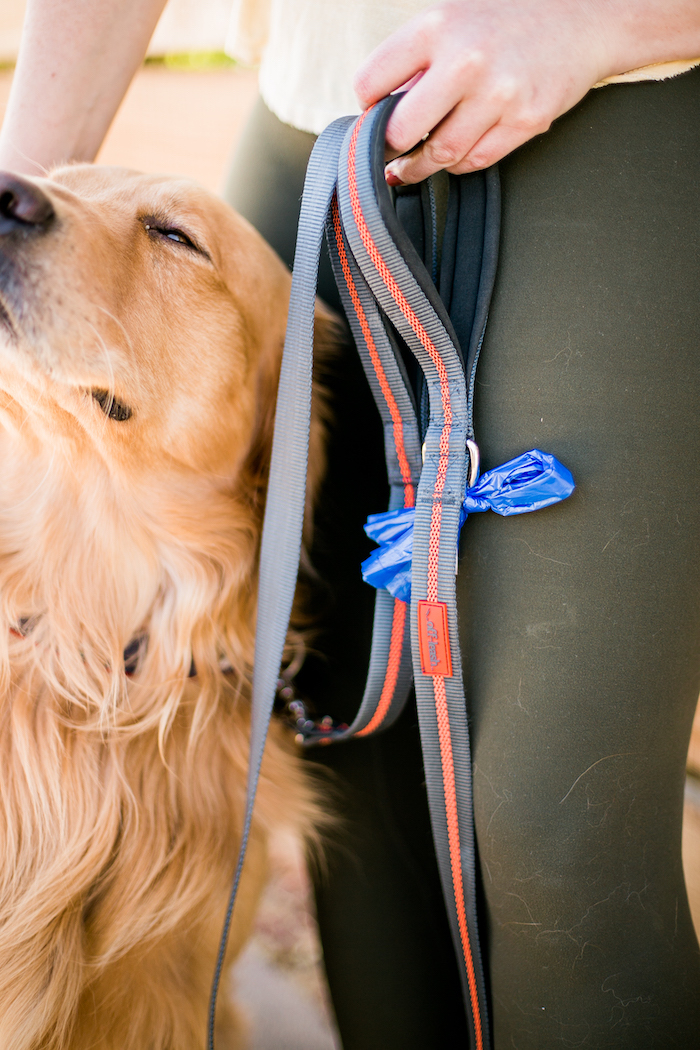
On traditional dog food, Rascal was lethargic, he shed in abundance and his appetite was mediocre. Since the dog food switch, he has been energetic, focused and calmer. On a traditional diet we were vacuuming at least once a day but now 1-2 a week. We no longer have to coax Rascal into mealtime and have finally developed a great eating schedule.
How much homemade dog food should I feed my dogs?
If you’re just getting started on your homemade pet food journey, general best practice is to feed your dog (or cat for that matter) 2-3% of its body weight. This will definitely vary from dog to dog, so I’d highly recommend speaking to your vet before going homemade. Generally speaking, for every 20 lbs your dog weighs, you give them roughly 1 cup of prepared food.
In terms of how frequently you should give your dog homemade dog food, it’s entirely dependent on the recipe and your dog’s weight, age, breed and overall health conditions—this is something you should talk to your vet about.
What natural foods can I feed my dog?
Home-cooked dog food diets can be one of the best ways to keep your furry friend happy and healthy. Surprisingly, just about everything food that’s good for a human, will be good for a dog too—but always check in with your vet first to make sure if you’re testing a new doggy diet or if your furry friend is particularly sensitive to food change. Foods like:
-
lean cooked chicken
-
cooked ground turkey
-
and whole grains (think brown rice or quinoa)
are some of the best human food substitutes to give your dog. Who knew the food pyramid applied to man’s best friend too?
The Need-to-Know Protein-Vegetable-Grains Ratio
There’s a general rule of thumb for how much raw vegetables your canine should consume versus the amount of meat they need. While puppies might require larger amounts of protein for their growing bodies, the key to an adult dog’s homemade dog food diet is balance and moderation—‚Öì protein + ‚Öì veggies + ‚Öì grains is the gold standard.
Foods That Dogs Should Never Eat
If you’re planning on pursuing a DIY homemade dog food option, avoid giving your trusted companion any of the below items—they can be toxic, poisonous, cause metabolization problems, or even lead to death.
-
Chocolate (and other sugary foods or drinks)
-
Avocados
-
Onions & Garlic
-
Milk (and other dairy products like cheese or yogurt)
-
Meats with nitrates (for example like bacon and hot dogs)
Ingredients for Rascal’s homemade dog food:
This nutritious homemade dog food recipe is the best one on the planet (in my humble opinion). Just look at the lineup of healthy ingredients!
- Olive oil
- Ground Turkey
- Sweet potatoes
- Carrots
- Zucchini squash
- Broccoli
- Chicken Stock
- Macaroni noodles
- Omega 3 Oil
- Nutrient Blend
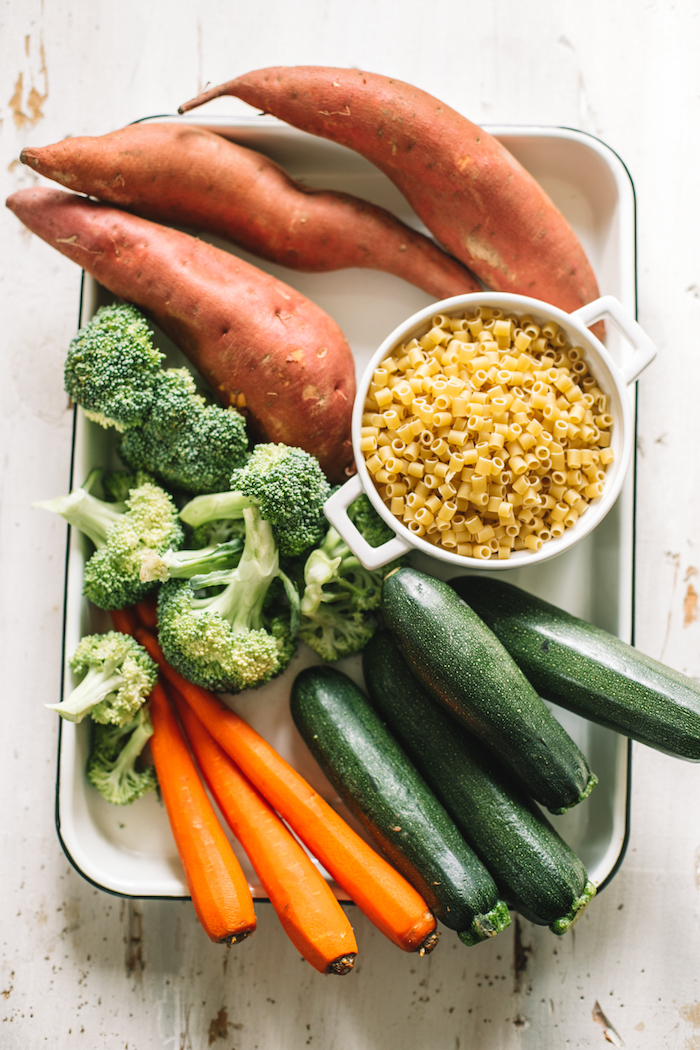
How to make homemade dog food?
Some small kitchen appliances and tools are needed to properly make dog food including:
- Food Processor: Before I start cooking a batch of homemade dog food, I blend up all the vegetables in my food processor. This Cuisinart food processor is my go-to. It’s a bit smaller than traditional food processors (we don’t have a lot of counter space) but works just as well as a larger model. Blending up the veggies nice and fine will speed up the cooking process.
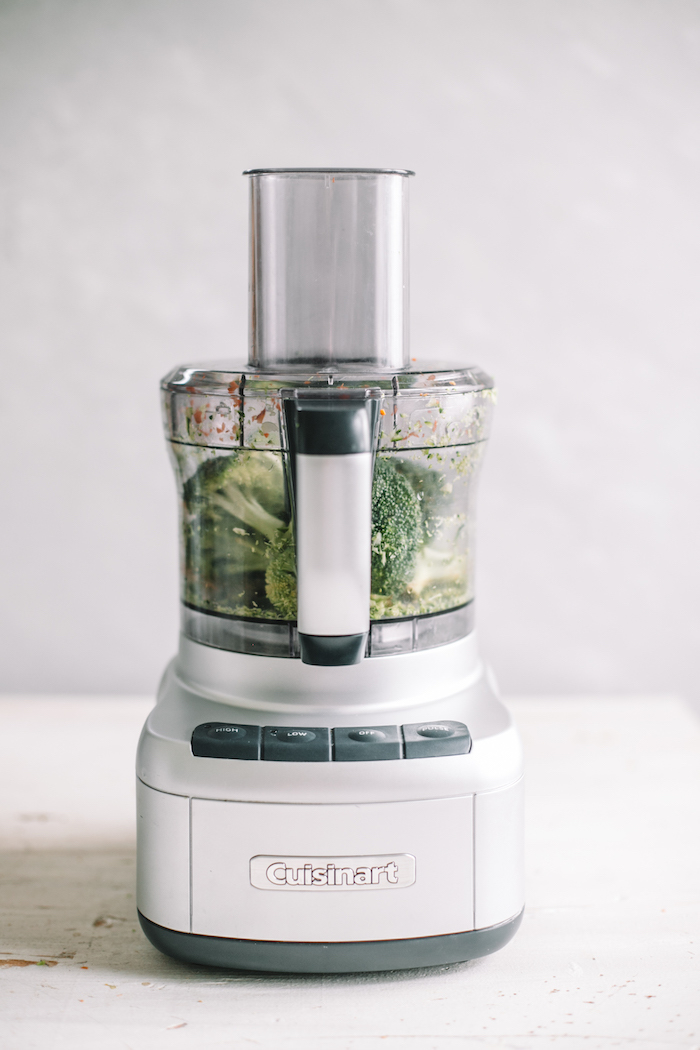
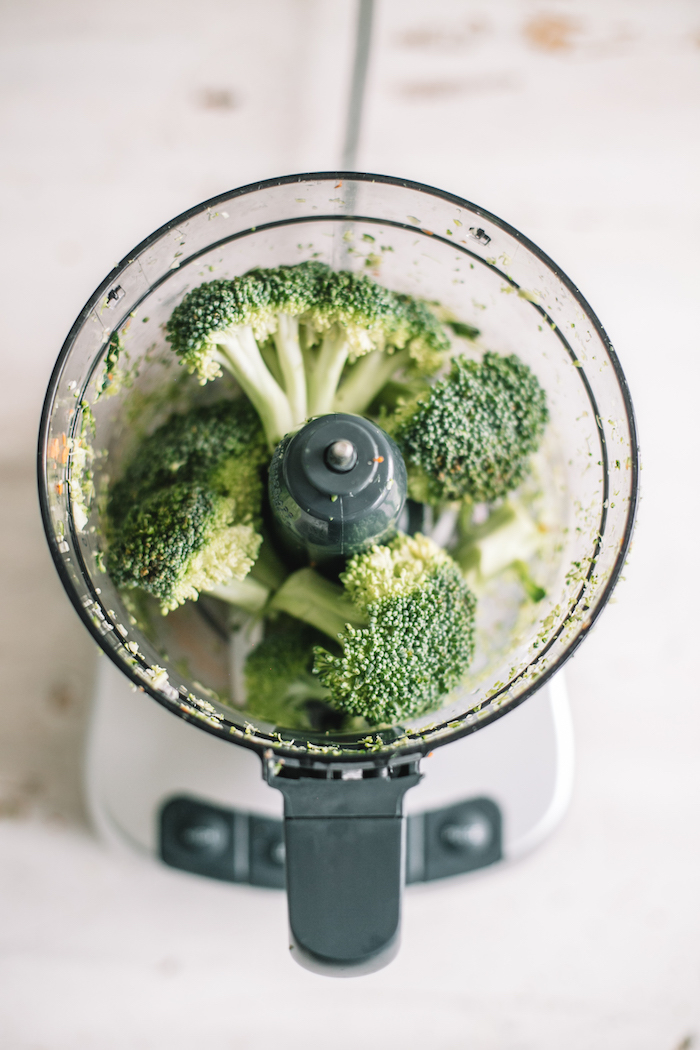
- Dutch Oven: I make the entire batch in my large Le Creuset round Dutch oven. I love using a Dutch oven because I can ground the meat first, and then finish off the batch right in the same pot. The process is very similar to making chili… except for dogs. Ya know… Dog Chili.
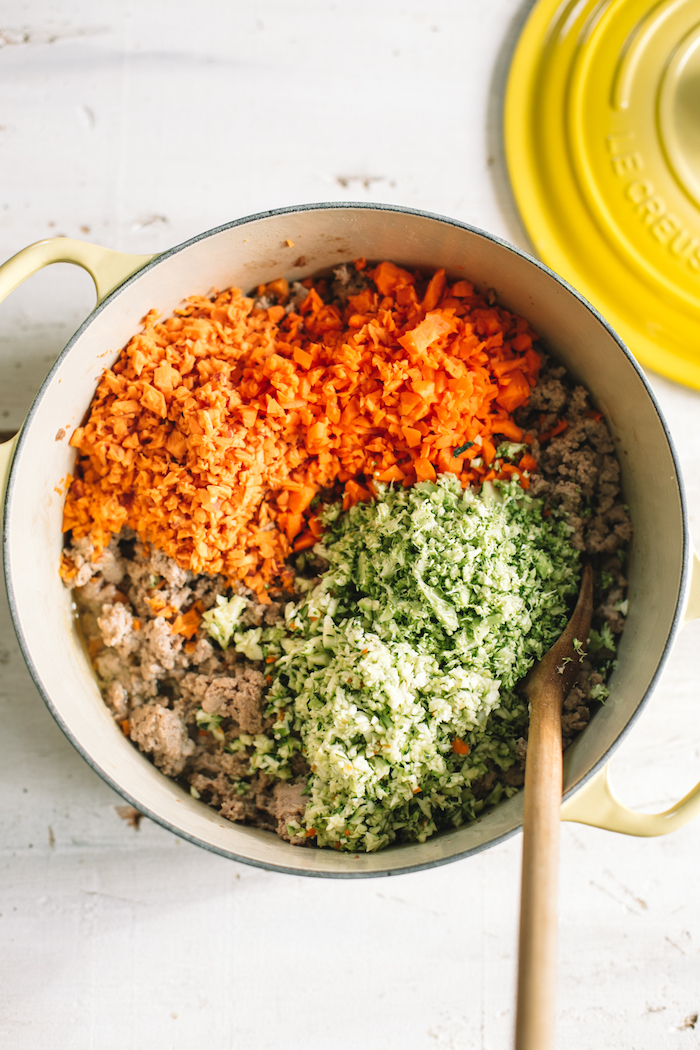
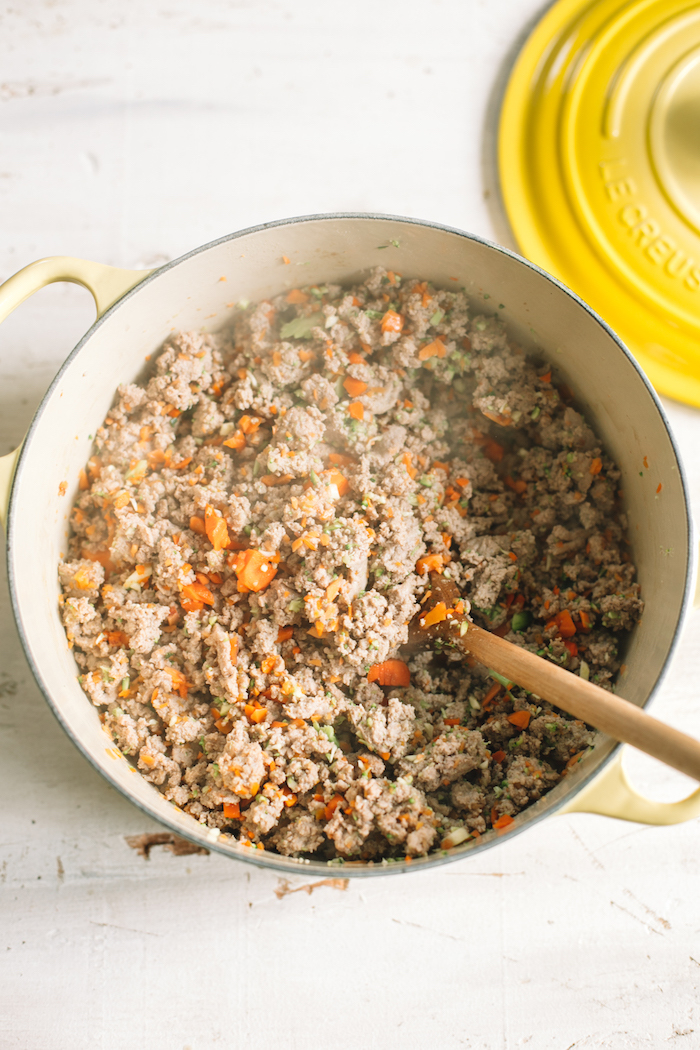
- Measuring Cups: Rascal has his own set of measuring cups now because it makes measuring out food ingredients and the finished batch WAY easier.
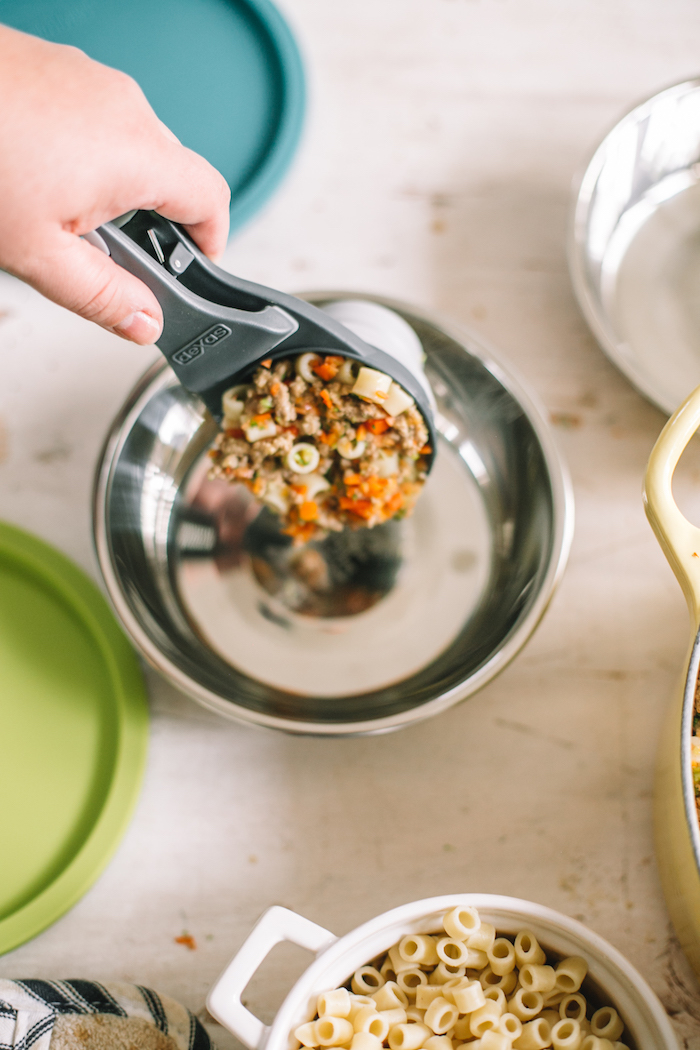
- Meal Prep Containers: This is basically meal prepping for your dog, so you will need some great Tupperware. I love using these stainless steal Tupperware bins made just for pups.
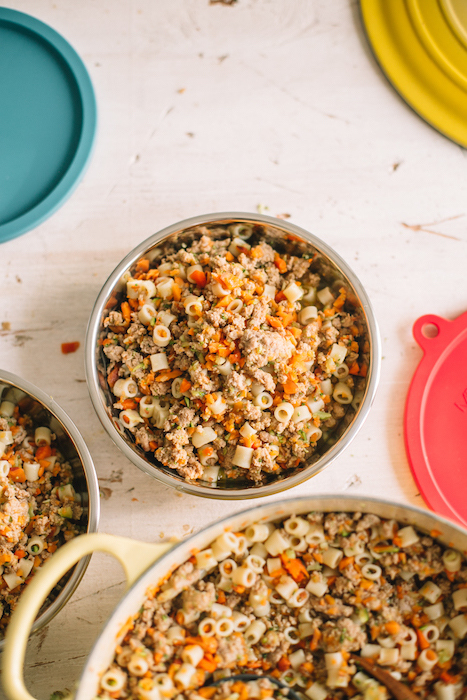
Recipe Variations:
There’s tons of room to get creative in the kitchen and play around with Rascal’s recipe depending on your pooch’s taste buds or existing diet restrictions. Switching up your dog’s meal flavors help provide them with all of the nutrients they need as they enter each stage of their life—just make sure that the new food transition is gradual. Introducing new dog food slowly can help prevent causing the animal stress.
- Protein: Rascal digests ground turkey really well but you can try ground beef, pork, chicken, lamb and Rascal’s personal favorite: venison. If you don’t have a meat grinder you can ask your butcher to ground it for you or cut it up super fie before cooking.
- Fruits & Vegetables: Apples, cauliflower, potatoes, peas, spinach, butternut squash, and cranberries are some great dog-friendly fruits and veggies.
- Grains & Carbs: Rice, quinoa, barley, whole grain pasta, and potatoes can be great options. If you can believe it, Rascal is actually allergic to rice. I wish I were kidding.
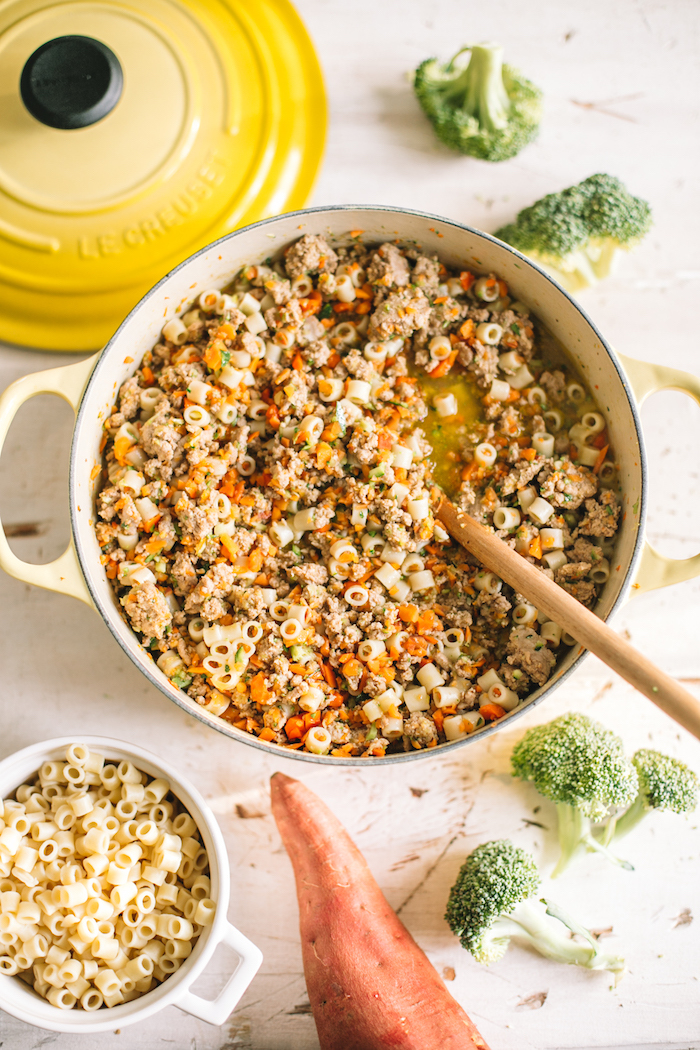
- We add in a nutrient blend from a company called ‘Just Food For Dogs’ very similar to dog vitamins as well as Omega oil to make sure he is getting enough healthy fats. I highly recommend adding both of these into your dog food so you can rest assure that they are getting proper nutrients.
What kind of homemade snacks can you make a dog?
Easy homemade dog snacks can be the best way to add a burst of flavor to your furry family member’s day. While you should avoid feeding your dog cherries, raisins, citrus fruits, cinnamon, and coconut, providing nutritious treats like the below are A-OKAY:
- Peanut butter: Rascal has his own dedicated jar of peanut butter. He loves a traditional Kong but you can also mold and freeze peanut butter in any shape for a quick frozen treat. When the jar is almost finished I break out my peanut butter spoon.
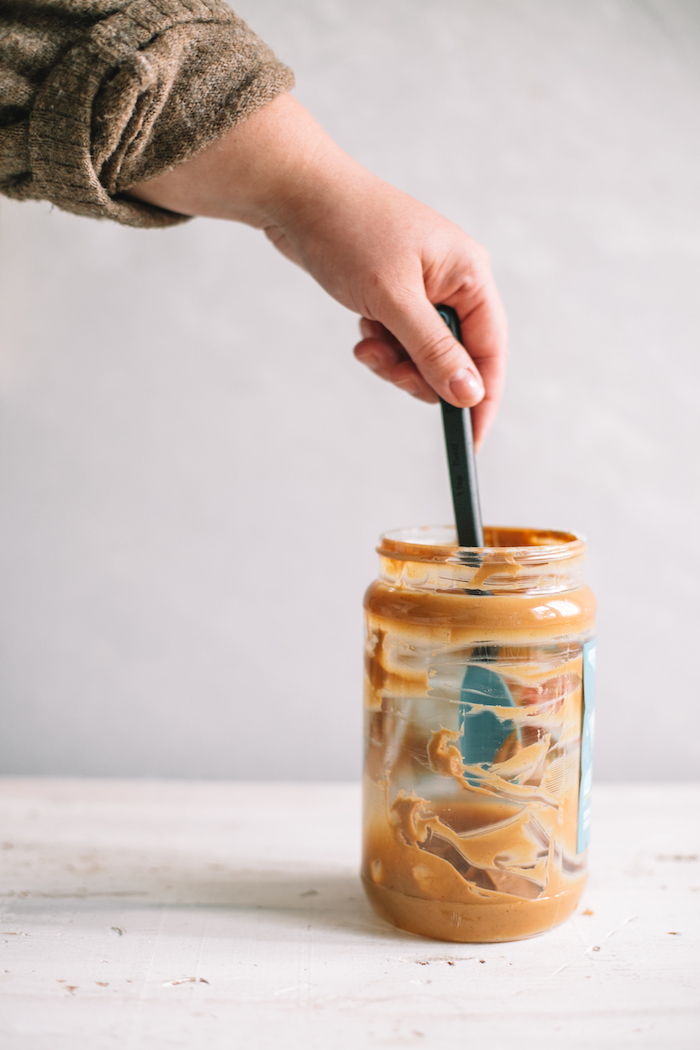
- Greek Yogurt Ice Cream: In the summer we blend up unflavored Greek yogurt, fresh berries, and peanut butter. Place a spoonful or two into a silicone cupcake pan and freeze for a few hours. These make for a great dog ‘ice cream’.
- Dehydrated Sweet Potatoes: Rascal’s favorite easy treat. We love bringing these over to family and friends’ houses so Rascal always has a healthy treat on hand.
How to Store Homemade Dog Food
Because homemade dog food typically consists of human food, the majority of homemade dog food recipes are safe to store in a refrigerator for four(ish) to five days and in the freezer for 3-5 months in an airtight container.
How long can I store homemade dog food?
Similar to human food, when heating up a frozen homemade meal for your dog, just toss it in the microwave for around 15 to 60 seconds depending on the ingredients.
Homemade Dog Food with Ground Turkey & Sweet Potatoes
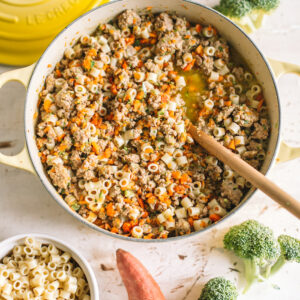
Ingredients
- 2 tbsp olive oil
- 3 lb ground turkey
- 3 medium sweet potatoes
- 3 carrots, peeled
- 2 zucchini
- 1 cups broccoli
- 3 cups chicken stock or water (no salt added)
- 20 oz macaroni noodles
Instructions
- In a large Dutch oven, heat oil on medium heat. Add ground turkey, begin to break it down and cook for 8-10 minutes or until mostly cooked through.
- With a food processor, finely chop sweet potatoes, carrots, zucchini, broccoli. Add in vegetables and stock to turkey. Cook on a strong simmer for 7-8 minutes or until veggies are tender and cooked through.
- Fill a large stockpot with water and bring to a rolling boil. Add macaroni noodles and cook for 8-10 minutes or until al dente. Drain and add to vegetable mixture. Divide mixture into meal prep bins and refrigerate or freeze
Nutrition
Looking for More Dog Recipes & Inspiration?
Here are some other delicious doggy meal ideas and caregiving tips to be a good pet parent:
- The best homemade dog treats that are actually easy to make—kale cookies, peanut and wheat germ treats, sweet potato treats, and banana and oat break-off sticks, YUM!
- For fresh circulating air and clean, clutter-less spaces try these 6 Feng Shui Essentials for Happy Pets
- Get your grooming technique in gear with advice on Everything You Need to Know About Grooming Your Dog at Home
- Your day-to-day w-a-l-k’s will never be the same with these 5 Dog Walking Tips for Your Furry Best Friend


